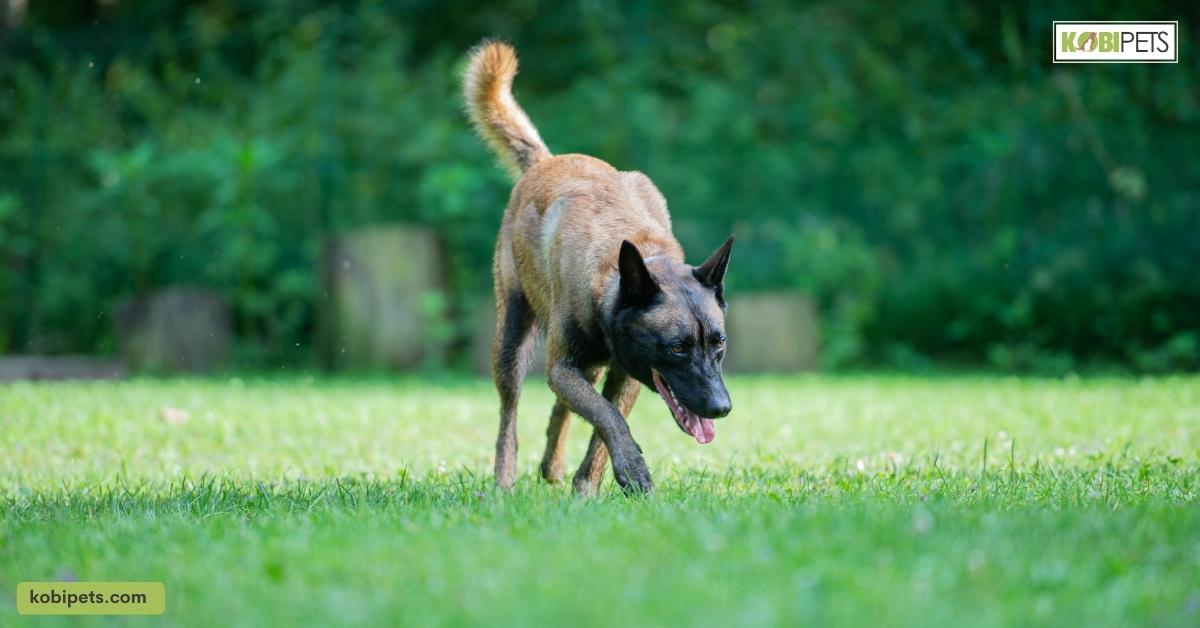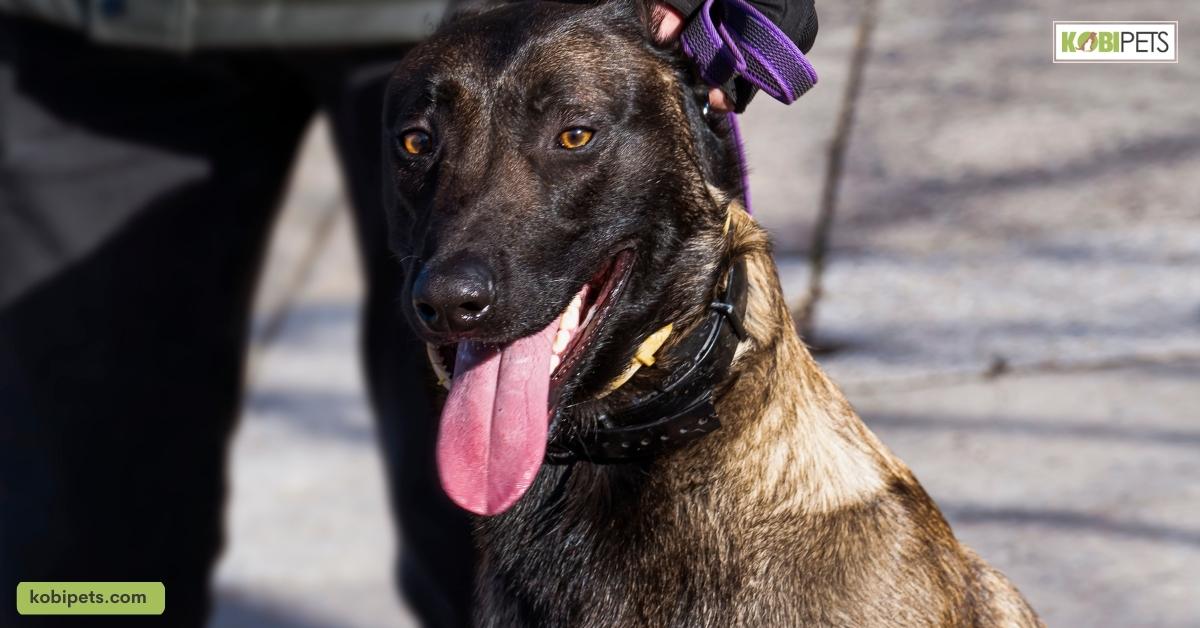Welcome to the world of the Belgian Malinois, a breed of dog that’s known for its unique combination of sensitivity and seriousness. These dogs, originally bred for work, have an always-on-duty personality that sets them apart from other breeds. They’re not just serious about their tasks, but about their playtime as well.
The Belgian Malinois is a sensitive, slow-to-mature breed that needs early socialization with other dogs and children. They’re renowned for their strong work ethic, often appearing “always-on-duty”. Despite their seriousness, they also treasure playtime, making them a challenging yet rewarding companion for discerning pet owners.
What to Know About Belgian Malinois?
The Belgian Malinois is not your ordinary dog breed. With a persona that blends workmanship and playfulness, these dogs are a bundle of joy and challenges waiting to be unraveled.
A potential dog owner must be aware of their specific needs and characteristics. So, what makes them tick? What should an owner be prepared for?
Let’s delve deeper to understand these affable creatures and what it takes to have a harmonious relationship with a Belgian Malinois.
Early Socialization is Key
When it comes to Belgian Malinois, early socialization is paramount. Introducing them to a variety of experiences, people, and other animals from a young age can help them grow into well-adjusted adults.
This exposure is essential for their emotional development and helps mitigate any potential behavioral issues.
Exercise and Mental Stimulation
Belgian Malinois are work-oriented dogs, which means they need regular physical exercise and mental stimulation.
Activities like obedience training, agility courses, and puzzle toys are integral to keeping a Malinois happy and healthy. Remember, a tired Malinois is a good Malinois!
Training Your Belgian Malinois
Training should begin early and needs to be consistent. Belgian Malinois are intelligent and eager to learn, making them excellent students.
Positive reinforcement techniques work best with this breed, as they’re sensitive and can become disheartened by harsh punishment.
Living With a Belgian Malinois
Living with a Belgian Malinois can be a rewarding experience, given their loyalty and protectiveness. Be prepared for a dog that’s always “on,” even during playtime.
They’re known to form strong bonds with their caretakers and thrive in homes where they’re included as part of the family activities.
Belgian Malinois Characteristics
Let’s take a closer look at the distinctive characteristics that set Belgian Malinois apart from other breeds. Their physical attributes, energy levels, and behavioral traits make them unique, and understanding these elements is vital for a potential owner.
So without further ado, let’s dive into the defining characteristics of a Belgian Malinois.
- High Energy Levels: Belgian Malinois are bustling with energy, which needs to be expended through daily exercise and mental stimulation to keep them content and well-behaved.
- Intelligent and Trainable: Belgian Malinois are prized for their high intelligence and eagerness to learn. They excel in various forms of training, from basic obedience to complex tasks.
- Protector Instincts: The breed has a strong instinct to protect its family. This makes them excellent watchdogs, but it also means they need careful socialization to prevent over-protectiveness.
- Work Ethic: Belgian Malinois are work-oriented dogs, always ready to take on tasks. This inherent drive is a part of their personality, whether they’re playing, training, or just hanging out at home.
- Sensitive Nature: Despite their tough exterior, Belgian Malinois are sensitive dogs that thrive on positive reinforcement and shun harsh punishment. They form deep emotional connections with their owners.
- Slow to Mature: Belgian Malinois takes a while to reach full maturity. During this time, plenty of socialization and positive experiences are crucial for their development.
- Always-On-Duty Personality: They can be serious dogs, always on alert, even during playtime. This trait requires owners to engage them in regular activities to channel this energy positively.
- Strong Bonds: Belgian Malinois are known to form strong bonds with their family. They’re happiest when they’re an integral part of family activities.
Caring for Belgian Malinois
Caring for a Belgian Malinois isn’t just about providing food and shelter—it involves a holistic approach towards their physical well-being, mental stimulation, and emotional support.
This section will guide potential owners through the essentials of caring for these special canines, ensuring they stay healthy, happy, and well-adjusted at all times.
Health and Nutrition
Belgian Malinois are generally healthy dogs, but like all breeds, they’re prone to certain health conditions. Regular vet check-ups and a balanced, nutritious diet are essential for their well-being.
It’s important to understand their unique nutritional needs, which can vary based on their age, size, and activity level. A diet high in quality protein will support their muscular physique and energy requirements.
Additionally, it’s beneficial to include joint supplements in their diet, as they’re an active breed and can be prone to joint issues.
Grooming Needs
Despite their short coat, Belgian Malinois do shed, with heavy shedding periods usually occurring twice a year. Regular brushing can help manage shedding and keep their coat healthy.
Bathing should be done as necessary, but not too frequently, as it can strip the coat of natural oils. Their nails should be trimmed regularly, and their ears checked weekly for signs of infection.
Suitable Home Environment
Belgian Malinois thrive in homes where they can be an integral part of daily activities. They’re not suited to apartment living due to their high energy levels. A home with a yard where they can run and play is ideal.
Given their protective nature, they should be in a home where they can view their surroundings. They can tolerate a wide range of climate conditions, but they should always have shelter and access to fresh water.
Adopting a Belgian Malinois
If you’re considering adopting a Belgian Malinois, it’s important to understand the commitment involved. This breed requires a lot of time, attention, and training. They’re not suitable for first-time dog owners or those who cannot invest the necessary time and energy.
However, for the right owner, a Belgian Malinois can be a loyal, energetic, and loving companion. It’s recommended to adopt from a reputable breeder or a rescue organization specializing in the breed.
Health Problems to Watch for with Belgian Malinois
Belgian Malinois, like any breed, can be prone to certain health conditions. Being aware of these potential issues is crucial for your dog’s well-being.
Some of the potential health problems Belgian Malinois owners need to watch for include:
- Hip Dysplasia: This is a common health issue in many dog breeds, where the hip joint doesn’t develop properly. Regular vet check-ups can help detect early signs of hip dysplasia.
- Elbow Dysplasia: Similar to hip dysplasia, this condition affects the formation of the elbows. It can lead to discomfort, limping, or difficulty moving.
- Progressive Retinal Atrophy (PRA): PRA is a family of eye diseases that involves the gradual deterioration of the retina. Early in the disease, dogs become night-blind, and later on, they may lose their daytime vision as well.
- Cataracts: Just like in humans, dogs can develop a cloudiness in the lens of the eye, leading to impaired vision. This condition can be surgically treated.
- Gastric Torsion (Bloat): This life-threatening condition often affects larger breeds like the Belgian Malinois. It’s important to know the signs such as a swollen abdomen, excessive drooling, and distress.
- Epilepsy: Some Belgian Malinois may suffer from this neurological condition, which can cause mild or severe seizures. Dogs with epilepsy typically lead healthy lives with proper management and medication.
Special Considerations for Belgian Malinois
When considering the Belgian Malinois as a potential addition to your family, several special considerations need to be taken into account. These are not your typical pet dogs; their high energy levels, intelligence, and work ethics make them unique.
In this section, we will delve into these considerations in greater detail to help you make an informed decision.
Mental Stimulation
Belgian Malinois, being highly intelligent and work-oriented, require continual mental stimulation. Providing them with puzzle toys, interactive games, and regular training sessions can help channel their intelligence in a positive way.
Mental stimulation is just as crucial as physical exercise in keeping a Belgian Malinois happy and healthy.
Training Techniques
The sensitive nature of Belgian Malinois dogs requires a softer training approach. Harsh punishments can distress these dogs and lead to behavioral issues.
Instead, using positive reinforcement techniques, such as treats and praises, will yield better results. Consistency is key to training Belgian Malinois effectively.
Safety Measures
Due to their always-on-duty personality, Belgian Malinois dogs can sometimes be overly protective. Owners should take safety measures to ensure the protection instinct doesn’t become overbearing, leading to aggressive behavior.
Regular socialization, especially during their early years, can help manage this trait effectively.
Emotional Bonding
Belgian Malinois form strong bonds with their owners. This emotional connection requires owners to commit substantial time and attention to their dogs.
Including them in family activities, acknowledging their achievements, and spending quality time together will strengthen the emotional bond.
Nurturing the Slow-to-Mature
As Belgian Malinois are slow to mature, they require careful nurturing during their development phase. Exposure to various experiences, positive reinforcement, and social interactions can contribute to their emotional and social development.
Patience, understanding, and consistent guidance are essential during this time.
Dealing with their Energy Levels
The high energy level of Belgian Malinois dogs requires regular physical exercise. Owners should engage them in daily walks, playtime, and other physical activities like agility training to keep the dog physically fit and mentally satisfied.
This will also help manage their ‘always on duty’ personality in a positive way.
In conclusion
Choosing a Belgian Malinois as your furry friend is a rewarding journey that comes with its unique set of challenges. They’re not just a pet, but a member of your family, one that’s always ready for action, and always on duty.
These intelligent, work-oriented dogs need consistent mental stimulation, regular exercise, and a balanced diet to stay healthy.






















